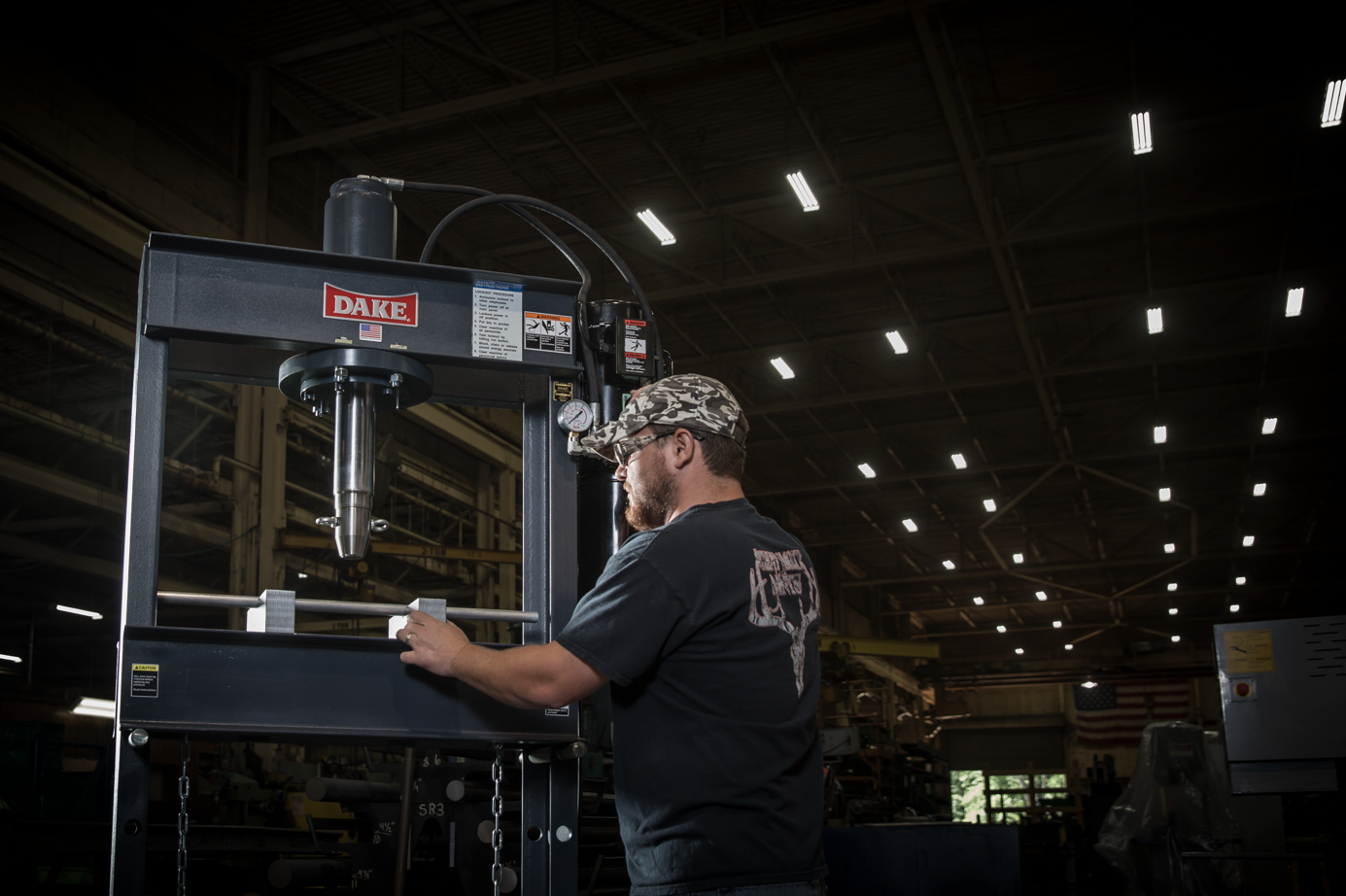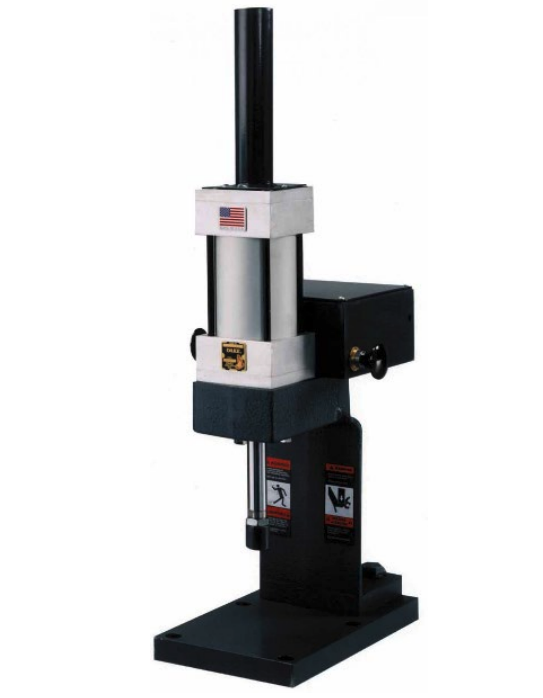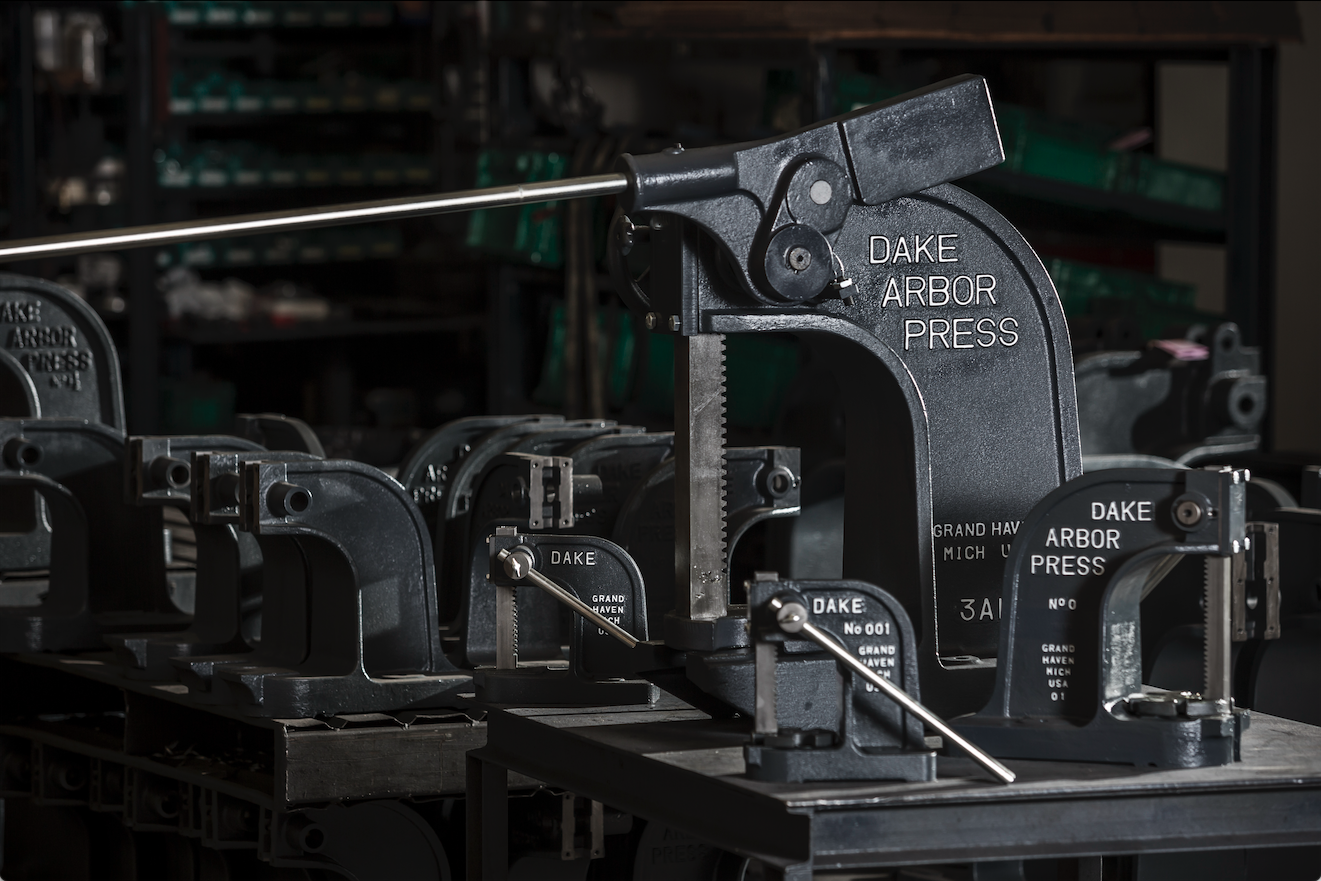When it comes to presses, Dake’s got em! Lots of them! Different sizes, shapes and for all kinds of applications. But choosing the right press is easy if you ask yourself these three vital questions. Plus, as a bonus we explore the history and principles of hydraulic presses.
Which questions might you ask?
- Size of the largest work piece! For arbor, C-Frame and H-Frame presses this will dictate the throat size (horizontal opening) Day light (vertical space required)
- Pressure required, or Capacity required! For arbor and H-Frame presses this will dictate how much force is required to perform the pressing operation. Always increase the tonnage required. This prevents premature wear of continually using the press at its maximum capacity, meaning less wear and tear on both machine and operator not having to push the limits on every part.
- Speed or Frequency! For arbor and H-Frame presses this is how often or how many. How often will the press be used or how many parts or operations per shift is required? If the required amounts are quite high, a manual press that requires the operator to pump the piston may not be the best choice. An electric or air model would be more suited for an operation like this unless your operator has arms like Popeye.
If you have these questions answered it will help guide you in the right direction or contact us at Dake and we will be happy to help recommending the ideal press for your application. If we don’t have the right press in our standard lineup, we’ll be happy to work on a special model for your needs.
A little history and principles of hydraulic presses
Hydraulic presses have been a major workhorse for many years. Function and principals of Pascal’s principle, that pressure throughout a closed system is constant, are still true today. Since the advent of the hydraulic press around 1795 many components have been improved on but the theory and principles are still old school.
Hydraulic presses are amazing things, yet so simple. Three basic components are required to make the whole thing happen.
First a pump to transfer the oil from a reservoir. This can be in the form of an electric, air or manual pump.
Next, a control valve to divert or meter the flow, direction, and volume of this oil.
Finally, the oil reaches the third component, the cylinder or workhead, filling the area above the piston cap with oil through the A port forcing the piston down.
Then, with the control valve the oil is either redirected to the B port for double acting cylinders or diverted back to the reservoir on spring return single acting cylinders.
Hydraulic presses changed the way we do things and that’s a good thing.
-1.jpg?width=1200&height=525&name=DAKE003_%20Logos_Red%20(002)-1.jpg)


